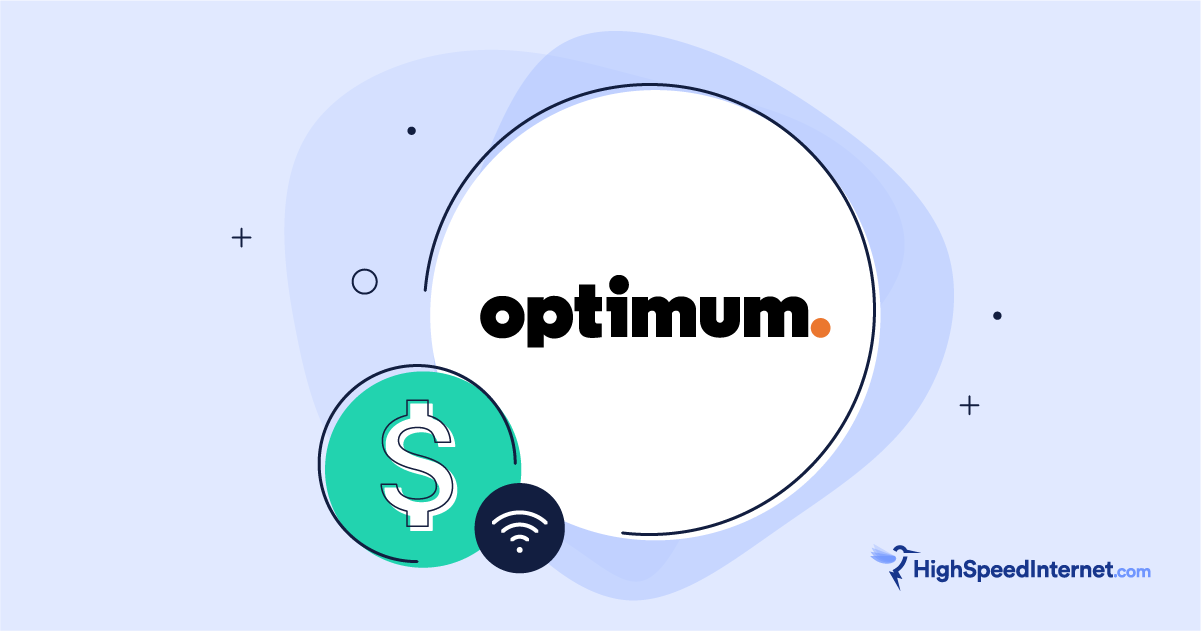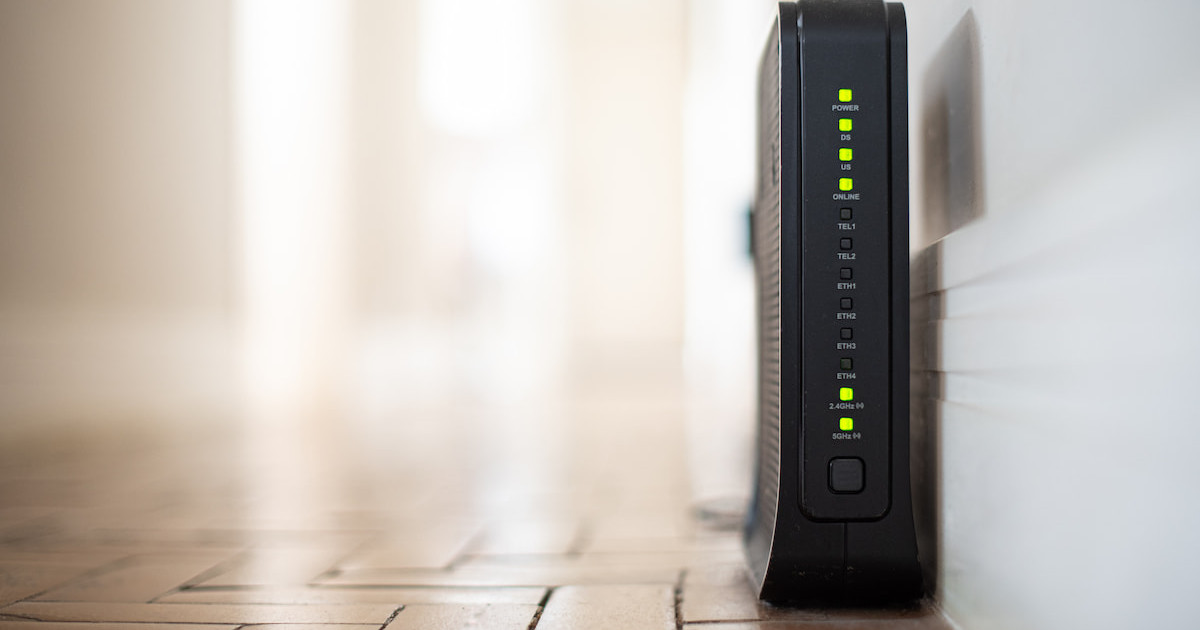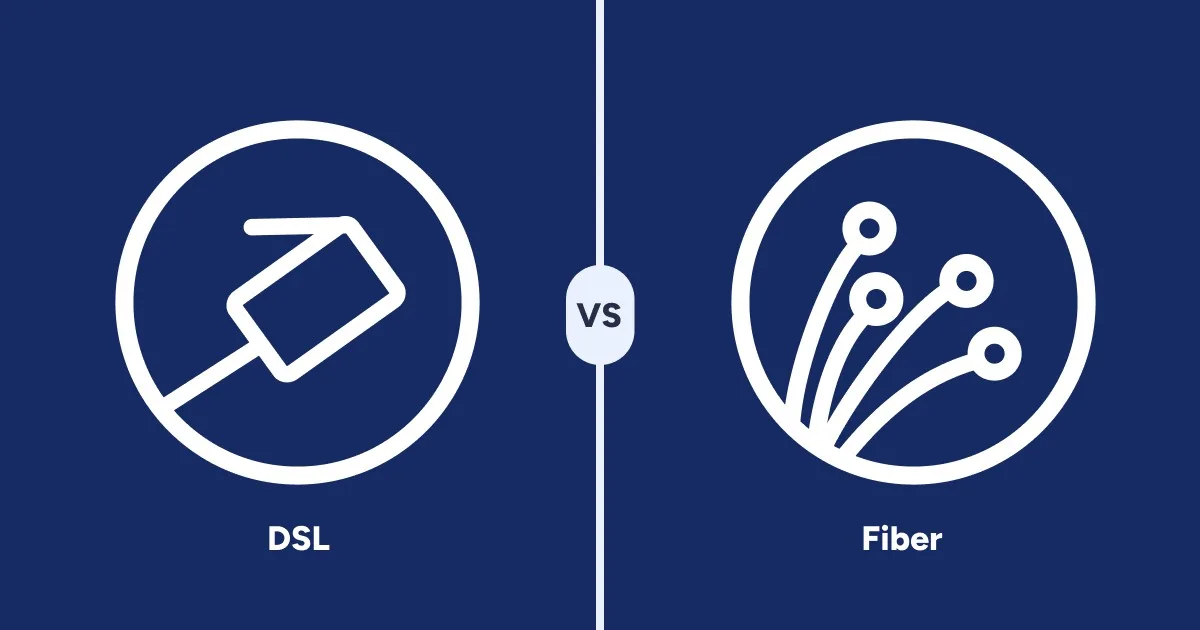Is the Government Banning TikTok?
What to know about the latest plan to ban the social media app
Jul 12, 2024 | Share
FAQ, Featured
The U.S. government has been trying to ban TikTok since the Trump administration, with many failed attempts. But in April 2024, the first federal TikTok ban was signed into law. This new law has rightly concerned many political analysts, free speech activists, and TikTok users.
Regardless of Congress’ regulatory zeal, this latest attempt to ban the popular video app has problems. A lot of problems. For those who are concerned about this potential ban, we’re going to take a deep dive into the legal, technical, and economic issues with this law and discuss the likelihood that the current law will actually go into effect.
History of TikTok bans
TikTok launched in 2017, quickly growing to become one of the most popular social media apps thanks to its ease of use and powerful recommendation algorithm. Chinese technology company ByteDance created TikTok to be a global version of its China-based app, Douyin, that it launched a year earlier. ByteDance also acquired Musical.ly, another music-focused short-form video app, and merged it into TikTok, giving the app an early boost to its user base. By the end of 2020, TikTok had over 800 million users worldwide. According to the Washington Post, TikTok’s website was visited more often than Google in 2023.
Executive orders
The popularity of TikTok in the United States attracted the attention of politicians. The U.S. military banned the use of TikTok on government phones in December 2019 over fears of Chinese surveillance. In August of 2020, then President Trump signed an executive order banning TikTok as a threat to “the national security, foreign policy, and economy of the United States.”
This vague, overreaching order sought to ban TikTok from major app stores unless it sold its U.S. business to an American company, which President Trump sought to compel in a separate order. TikTok challenged the orders, the first of which was blocked by Judge Carl Nichols of the U.S. District Court for the District of Columbia before it went into effect. The divestiture bill was blocked by U.S. District Judge Wendy Beetlestone of Pennsylvania. President Biden then revoked the orders after entering office in 2021.
Minnesota State ban
The first public TikTok ban signed into law in the U.S. was passed in Montana in 2023, though it, too, was blocked before taking effect. U.S. District Judge Donald Molloy noted that in addition to the law being unconstitutional, it was clearly designed to target China, despite the state attempting to frame it as a consumer protection bill. The law would also have been impossible to enforce, since app stores don’t track people as they cross state lines.
Proposed federal bans
Several TikTok bans were introduced in Congress during this time, the most notable being the RESTRICT Act, proposed in March 2023. This bill had President Biden’s endorsement and bipartisan support in the Senate. The bill didn’t name TikTok or China explicitly, but would have given the government broad powers to “identify and mitigate foreign threats,” which presumably referred to videos of dancing teenagers.
In addition to policing social media apps like TikTok, the bill also explicitly gave the government the ability to target all of the following:
- Desktop applications
- Mobile applications
- Web-based applications (we’re already covering basically all software at this point)
- Gaming applications
- Internet hosting services
- Wi-Fi networks
- AI and machine learning
- Quantum computing
- Autonomous systems
- Advanced robotics
- Biotechnology
- Lots of other categories with science fiction sounding names.
The enforcement of this bill would also have been exempt from many judicial review protections and the Freedom of Information Act (FOIA).
If you think that a law that theoretically gives the government power to shut down anything from an app on your phone to a new type of cancer treatment to an entire data center (to say nothing of all the hypothetical computing and biotechnology applications that would fall under this law) is a bit of an overreach, you wouldn’t be alone. The bill received harsh criticism from people on both the right and the left, and within days, Senators were awkwardly attempting to backpedal their support.
Despite these failed attempts to ban TikTok, Congress is still attempting to ban the app.
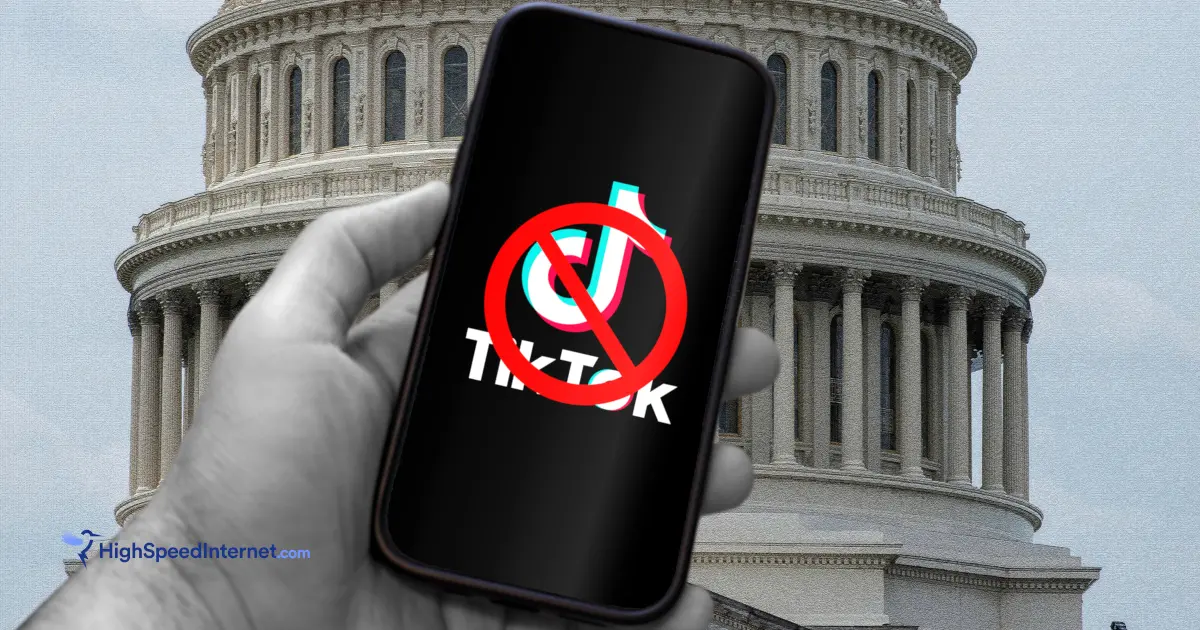
The April 2024 TikTok ban
On April 20, President Biden signed House Resolution 815 into law, providing much needed military aid to Ukraine after months of obstruction in Congress. Due to the urgency and pressure to push this bill through, lawmakers were eager to pin their own pieces of legislation to it, especially those that might not pass on their own.
By the time it got to the President’s desk, 19 other bills were riding the coattails of the Ukraine aid bill, including a new version of the TikTok ban. Unlike the failed RESTRICT Act, this ban specifically targets TikTok and its parent company, ByteDance, by name. The new law gives TikTok 270 days from the day it was signed to completely divest of its U.S. operations, which would then have to operate as a separate company with no relationship to the rest of TikTok outside the States.
So now that an official TikTok ban has been signed into law on a federal level, does that mean that it’s finally going to work this time?
No.
Like all the other attempted bans, this one is not going to have the results U.S. politicians are hoping for. For starters, ByteDance is not currently setting up a new U.S.-only office, but rather is suing the federal government over the new law. And its lawsuit does a good job of pointing out why this new ban will never work.
There are three broad ways in which the TikTok ban fails:
- Legal grounds
- Technical grounds
- Economic grounds
The ban has a massive number of problems in each of these areas, so let’s start with perhaps the most important one: the legal problems.
Legal problems with the TikTok ban
None of the previous attempts to ban TikTok made it past the courts, so it should be no surprise that the latest ban has a lot of legal problems.

First Amendment restrictions
The main argument against the federal TikTok ban is that it violates the rights of both TikTok users and the company. The first amendment not only protects people’s rights to express themselves, but also people’s rights to access information.
There are, of course, situations in which the government can restrict free speech, such as in the case of fraud, perjury, or credible threats of violence. Whether or not the government has the ability to restrict speech depends heavily on the level of legal scrutiny the court applies to a case.
Any attempt to ban speech based on its content requires courts to apply strict scrutiny, which means that the government must prove that the restriction serves a compelling government interest and that it is the least restrictive way of advancing that interest. In the history of the Supreme Court, only two cases have ever passed strict scrutiny.
On the other hand, content-neutral restrictions on speech that don’t target specific content or viewpoints are only subject to intermediate scrutiny. Under this standard, the government doesn’t have to show that a law is the absolute least restrictive option available, just that it is narrowly tailored to serve the government interest. This is presumably why previous bans went out of their way not to name TikTok or ByteDance explicitly, even if everyone knew that was their target.
The federal TikTok ban, however, explicitly targets the app and the company, which makes it difficult to argue that the ban is content- and viewpoint-neutral. Furthermore, all of the threats to national security that have been alleged thus far have been hypothetical, a fact that was also brought up when the Montana state ban was struck down. I think Dr. Casey Fiesler of the University of Colorado Boulder put it best, noting that “vibes are not a compelling interest.”
Even if the government was successfully able to argue that the TikTok ban was content neutral, I find it unlikely to pass even intermediate scrutiny. Perhaps the most apt comparison is with the 1994 Supreme Court case of City of Ladue v. Gilleo. In that case, Margaret Gilleo was prohibited from placing an anti-Gulf War sign in her yard because all signs were prohibited in Ladue. Even though the law was decidedly neutral, the court found that the ban on yard signs was unconstitutional because the city blocked off an entire method of communication. (Sound familiar?)
“Ladue has almost completely foreclosed a venerable means of communication that is both unique and important. It has totally foreclosed that medium to political, religious, or personal messages. Signs that react to a local happening or express a view on a controversial issue both reflect and animate change in the life of a community.” –City of Ladue v. Gilleo
TikTok is also a unique and important means of communication for a wide range of speech. If the yard signs in Ladue were an important medium of expression, then how much more important is a medium that connects hundreds of millions of people, creates collaborative music, facilitates street protests, organizes fundraising campaigns, and, yes, allows teenagers to keep up-to-date with the latest dance craze?
Perhaps the most compelling argument against both the neutrality of the federal ban and whether or not the ban serves a compelling government interest came from Senator Mitt Romney when he said the quiet part out loud at the McCain institute on May 3. During a conversation on stage with Secretary of State Antony Blinken, Romney said that the reason why there was such overwhelming support in Congress to shut down TikTok was because of “the number of mentions of Palestinians, relative to other social media sites.” According to Romney, the primary reason for the ban is not to fight Chinese espionage, but to control the political speech of American citizens.
The first amendment provides broad protections for many kinds of speech, but courts are particularly deferential to political speech. As the Supreme Court stated in Cox v. Louisiana, “Maintenance of the opportunity for free political discussion is a basic tenet of our constitutional democracy.” The importance of other forms of political expression was further emphasized in City of Ladue v. Gilleo and Texas v. Johnson. Whether suppressing political speech is the goal of the TikTok ban or merely a side effect, it’s going up against a century of First Amendment case law, and the odds are not in its favor.
Tell me it’s not about privacy without telling me…
Another important point about the federal TikTok ban that Dr. Fiesler highlights is what it actually targets. Despite the justification for the law being framed around national security issues arising from the Chinese government collecting data on U.S. citizens, the law is written in such a way that “it’s actually triggered not by whether an application collects user data, but whether it shows them content.”
This undermines any argument that the ban as written is necessary for national security, as it is not narrowly tailored to stop China from taking private information from U.S. citizens, but rather to stop information from China from being presented to U.S. citizens. This kind of restriction was explicitly rejected by the Supreme Court in Lamont v. Postmaster General, which affirmed U.S. citizens’ First Amendment right to receive information from foreign countries.
Dr. Fiesler also emphasizes that the wording of the law makes it even more specific to the way that TikTok works. This very apparent targeting of a single company could also violate the due process clauses of both the Fifth and Fourteenth Amendments, as well as the Constitution’s prohibition on bills of attainder.
Bills of attainder are banned by the constitution
The federal TikTok ban also runs afoul of Article 1 of the Constitution. In section 9, it explicitly states that “No Bill of Attainder or ex post facto Law shall be passed.” Bills of attainder are laws passed to punish someone without trial. For example, Kevin could sue me for stealing his sandwiches from the break room, but Congress could not pass a law requiring me to pay Kevin for his sandwiches, even if I had been stealing them. (It totally wasn’t me.)
In this case, the government is not suing TikTok for something it has done, but passing a law to essentially confiscate its property. As such, this could be seen as a bill of attainder, which is about as unconstitutional as you can get. The modern test for bills of attainder comes from Nixon v. Administrator of General Services and has three parts:
- Historical
- Functional
- Motivational
Since most examples of bills of attainder come from pre-Revolutionary times or the Civil War, there’s probably not a historical example that’s directly applicable to banning a piece of software, which means the government is probably safe on this point. Still, the broad nature of the ban muddies the water, as it explicitly targets any product made by ByteDance. Thus, it could be argued that the TikTok ban threatens the employment and livelihood of TikTok employees (or even creators that make their living on TikTok) in the same way as the Civil War-era laws in Ex parte Garland and Cummings v. Missouri.
For the functional test, the government also has a pretty good argument, as national security is an important function of the federal government. Additionally, prophylaxis against future cyber-threats was deemed relevant to risk-prevention function by the courts in Kaspersky Lab, Inc. v. United States.
Of course, the government’s position on this test isn’t nearly as strong as it was in Kaspersky because, as previously mentioned, no one in Congress has been able to make a compelling case for why TikTok is a threat to national security. In contrast, the government’s case in Kaspersky cited at least five committee hearings, reports detailing ties between Eugene Kaspersky and the Russian FSB, and testimony from the heads of U.S. intelligence agencies.
In its lawsuit, TikTok questions the supposed national security threat posed by TikTok, noting that there have been no legislative findings to support that claim. Furthermore, if the lawmakers who support the bill are genuinely concerned about the threat posed by TikTok, why do they and President Biden still maintain TikTok accounts for their political campaigns?
Lawyer and legal commentator Devin Stone also noted that the lengthy period of the forced sale “undercuts the government’s argument that TikTok is an immediate national security threat.
The motivational test is where I think the government might be on shaky ground. As Dr. Fiesler points out, sponsors of the ban have expressed specific concerns about viewpoints shared on the platform (which is also problematic on First Amendment grounds). The broad federal TikTok ban is better suited to suppressing these viewpoints among the general public or to destroying ByteDance as a company than it is to protecting national security.
Turning once again to the court’s ruling in Kaspersky, the ban at issue did not ban Kaspersky products nationwide, nor did it attempt to force the company to sell its assets to American firms. Rather, it simply directed federal agencies to remove the company’s products from government information systems. The law had a specific goal, and its implementation was narrowly tailored to achieve that goal.
While the TikTok ban claims to serve a similar non-punitive function, it’s not clear whether the courts would consider the actions taken by the government to be rationally related to such a purpose. If they did, it would set a precedent that would massively expand the government’s power to unilaterally regulate tech companies relative to the precedent set in Kaspersky.
Technical problems with the TikTok ban
While I think that the most likely scenario is that the federal TikTok ban will die in the courts just like every other attempt, the likely unconstitutionality of the ban is just the tip of the iceberg. Even if the courts gave the green light to every provision of the law, it would never be implemented. Because Congress doesn’t understand the internet.
Congress doesn’t understand the internet
Back in March 2023, TikTok CEO Shou Chew was brought before a congressional hearing to respond to concerns about his company. While the hearing raised some legitimate concerns, such as concerns about user privacy and data collection, these were mostly overshadowed by combative and uninformed questions raised by a few Congress members, making the hearings a prime target for online ridicule.
Representative Buddy Carter of Georgia focused part of his time on his assertion that TikTok’s face tracking software must be measuring pupil dilation. Chew attempted to explain the concept of a TikTok filter and local data storage before being interrupted by Carter. “Why do you need to know where the eyes are if you’re not seeing if they’re dilated?”
While Representative Carter has been called out by both news outlets and internet users for being rude, combative, and barely coherent, he did at least ask questions. This could not be said for all the Congress members at the hearing, many of whom simply answered their own questions, berated Chew without asking him a question, or condescendingly reminded him that he had to answer questions truthfully before immediately interrupting him when he tried.
Perhaps the most infamous line of questioning from the hearing came from North Carolina Representative Richard Hudson, who repeatedly asked Chew if TikTok could access his home Wi-Fi network.
“So if I have the TikTok app on my phone,” asked Hudson, presumably to clarify, “and my phone is on my home Wi-Fi network, does TikTok access that network?”
To his credit, Chew did his best to give a thoughtful response, “It would have to…to access the network to get connections to the internet, if that’s the question.”
As long-time HighSpeedInternet readers will know, setting up a home Wi-Fi network allows all your Wi-Fi enabled devices to connect to the internet wirelessly, rather than having to physically plug them into your router. When you use an app like TikTok or YouTube on your phone, the app connects to the company’s video servers through your home wireless network, then through your internet connection, then through the broader internet to the servers. Video data then makes the trip in reverse, delivering cat videos and sea shanties to the screen in your hand.
Need a better internet connection for your home Wi-Fi network?
Enter your zip code below to see what providers are available in your area.
Hudson acted as if he’d cornered Chew with a clever gotcha! question, as if TikTok using the home Wi-Fi is akin to the company sneaking into your house through the back window. In reality, it’s more like asking Elon Musk if the Cybertruck can access the street he lives on. In theory any car could drive on his street and if Hudson owned a Cybertruck, he would probably want to drive it on his street too.
As a whole, the TikTok hearings were just an embarrassment for Congress, but they highlight a major problem with the federal TikTok ban that would eventually pass—many of those in Congress most committed to banning TikTok lack the basic technological literacy to understand how TikTok works and how one would go about regulating it in the first place.
What makes TikTok TikTok
TikTok is far from the only video sharing app on the internet. As broadband speeds have increased in both the U.S. and around the world, video has become a more central component of almost every social network. What sets TikTok apart from other video sharing platforms is the algorithm behind its For You Page (FYP), which allows the app to provide a continuous stream of new videos tailored to the user’s preferences.
While nearly all social media apps have some kind of recommendation algorithm designed to show users new content unprompted, these algorithms are traditionally centered around users following or subscribing to other creators. Apps like YouTube and Twitter look at the accounts you follow, then identify accounts that are followed by the same kinds of people and add their content to your feed (a technique called collaborative filtering).
The use of hashtags, watch history, view counts, and other data points supplements this process, helping to identify content that might match your needs; however, with hundreds of millions of users constantly churning out content on these platforms, correctly identifying and recommending quality content is an ongoing challenge.
The TikTok FYP employs a much more sophisticated algorithm. In a paper outlining its approach, ByteDance researchers Weihao Gao, Xiangjun Fan, Chong Wang, and their team outline one part of their recommendation system, a model they call “Deep Retrieval,” which they claim is much more flexible and scalable than other machine learning models. This model uses user interactions (like clicks and swipes) to evaluate preferences for different kinds of videos.
Importantly, this method has less computational complexity—or in other words, has fewer steps—than other methods while providing similar results. This allows it to quickly process the huge amount of continuously arriving content that TikTok users are creating. TikTok then uses other ranking algorithms to take its collection of hundreds of millions of videos down to hundreds of thousands, then to hundreds, and finally down to a few dozen videos that it serves up on the user’s For You page.
TikTok users, of course, don’t see any of the machine learning algorithms. They just open the app and swipe through an endless queue of videos personalized to their specific preferences. Very specific. TikTok’s eerily perceptive recommendations introduce users to other cultures, create niche communities, convey health care knowledge, serve as a teaching tool, and acquaint people with new hobbies and interests. I didn’t know I loved Finnish industrial-dance-pop-party-metal, but somehow TikTok knew.
Unlike other platforms where new creators have to compete against established stars who accumulate the vast majority of views, TikTok will often show creators with two followers alongside creators with two million. As Gao, Fan, Wang, and their fellow researchers note in their paper, TikTok’s algorithm is “more friendly to less popular videos or less popular creators,” judging new videos based on how users respond to them, rather than who made them. This creates a much more diverse landscape that is “beneficial to the platform’s creator ecosystem.”
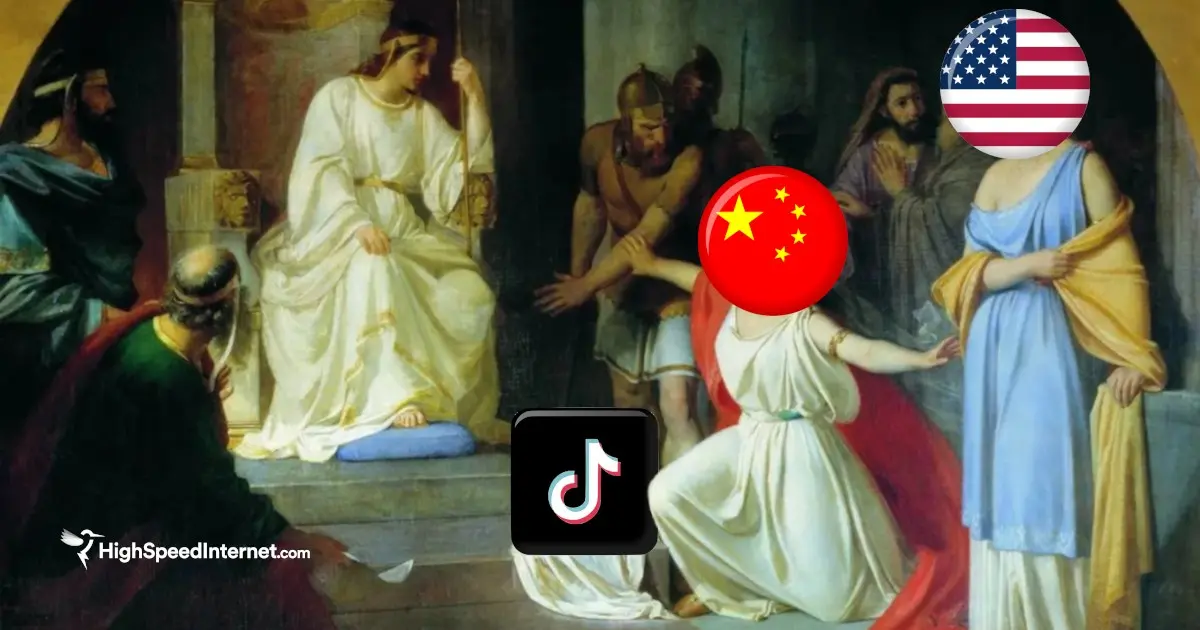
Cutting the algorithm in half
Since some of the Congress members trying hardest to ban TikTok don’t know how their phones connect to the internet, maybe it shouldn’t be so surprising that the federal TikTok ban was written as if it were trying to regulate a car manufacturer or a restaurant chain. Congress seems to think that TikTok can simply spin off a U.S. division the same way KFC’s parent company, Yum! Brands, spun off its Chinese division. Reassign some assets here. Shuffle around some executives there. Sign a bunch of contracts and it’s done.
Of course, there aren’t a bunch of physical TikTok locations in the U.S. where teens go to pick up their short-form videos. TikTok’s software does exist on millions of mobile phones and in the data centers of app stores, but logistically, there are few similarities. For starters, in Yum China’s initial information statement to its shareholders, it emphasized that the new company was already self-sufficient, with experienced management, its own research and development department, and an established supply chain that it had spent 30 years building.
TikTok in the United States, on the other hand, is very much not self-sufficient. It is a small part of a global network of TikTok users that’s managed by a huge centralized software system. As Dr. Fiesler points out, TikTok is not just a single algorithm; it is a massive amount of infrastructure, likely consisting of millions of lines of code. In order to create a new U.S.-only version of TikTok, ByteDance would have to transfer all of its source code development to a completely new team of engineers that have never seen any of it and getting them all up to speed in 270 days, after which time, the American engineers would never be able to speak to the original developers again.
In Dr. Fiesler’s estimation, if the establishment of a U.S.-only TikTok version were even possible on a technical level, it would take years to get it up and running. This would, at minimum, require the federal TikTok ban to be substantially modified from the version that was signed into law. Forcing ByteDance to build a second version of its software for an American company also brings up a lot of other legal and economic issues with the TikTok ban.
Economic problems with the TikTok ban
One common defense of the Federal TikTok ban, memorably stated in Nancy Pelosi’s very cringy “tic-tac-toe” speech, is that it’s not a ban because ByteDance will definitely sell rather than face the draconian consequences laid out in the bill.
This is disturbing for a number of reasons, primarily because the underlying logic of this stance is that neither the legality of the practicality of the law matters, because Congress can intimidate TikTok into complying voluntarily. This method, in theory, could be used by Congress to ban any media outlet, regardless of First Amendment protections.
On a more practical level, this plan would never work because, economically, TikTok selling its U.S. operations to an American company would be really, really stupid.
TikTok, as a subsidiary of ByteDance, only has one product: the TikTok app. It makes money by selling advertisements, offering in-app purchases (mostly as a means to send tips to creators), and through products sold through the TikTok shop. The reason TikTok is so appealing to advertisers is because of how narrowly targeted its content is for individual users. Analysts have estimated the value of TikTok at around $100 billion, with perhaps $70 billion of that value created by its recommendation algorithm.
TikTok’s entire business revolves around its proprietary algorithm. That’s what distinguishes it from copycat products like Instagram Reels or YouTube shorts. Giving that to another company that’s not only independent, but completely cut off from ByteDance would be giving away its whole economic reason for existing.
It’s worth noting that in the example of the Yum China divestment, the functionally independent Chinese company still pays licensing fees to its U.S.-based former parent company for use of brands like KFC and Pizza Hut. They also have agreements not to compete in the other’s territory, which would kind of defeat the purpose of the spin off. This highlights how the federal TikTok ban’s requirement for total separation makes the proposed U.S. company less like a normal divestment and more like a cynical excuse to steal a $70 billion algorithm.
The pot calling the kettle black
For years, one of the main accusations directed at the government of China by U.S. officials and politicians is that it doesn’t respect intellectual property (IP) laws and has engaged in corporate espionage to steal trade secrets, software, and research from U.S. companies. Although the U.S. asserts that it does not engage in similar kinds of industrial espionage against Chinese companies, it’s hard to maintain the moral high ground when you brazenly write laws requiring Chinese firms to simply hand their IP over.
Unsurprisingly, China has export laws, just like the US. Even if TikTok wanted to divest of its US operations China would not allow the company to hand over its algorithm. And without the algorithm, TikTok isn’t TikTok. At best, a divestment of the type Pelosi and others in Congress portray as inevitable would simply dump US TikTok users into a vastly inferior app siloed away from the rest of the world. One way or another, the law passed in April 2024 is a TikTok ban.
Economic consequences for Americans
A TikTok ban, regardless of the form it takes, would also have a severe impact on many Americans. As Drew Harwell of the Washington Post points out, many TikTok creators support themselves through advertising revenue or through sponsorship deals. Influencers on TikTok now make more than those on Facebook. TikTok users can also support creators they follow by sending tips through in-app purchases. In Fall 2022, TikTok users spent over $900 million on these in-app purchases, setting a new record for the highest quarterly spending of any app. Ever.
The economic importance of TikTok, Harwell notes, doesn’t just impact those who make their living directly from TikTok itself. For some industries like music, TikTok has become “effectively mandatory” for artists to achieve success.
TikTok was also an essential tool for many small businesses to stay afloat during the pandemic. The app not only helped these businesses attract customers during lockdown, it also helped these businesses connect with each other and form commercial relationships.
The ability of the TikTok algorithm to introduce people to new creators that they don’t already follow makes it an invaluable tool for small businesses that don’t have the same reach as nationwide corporations. Meanwhile, its large, engaged user base has made TikTok the fastest-growing channel for product discovery.
For content creators, small business owners, and many other groups, a TikTok ban would have severe economic consequences. Even if ByteDance is eventually successful in overturning the ban, until then, this leaves many Americans with an uncertain financial future.
The US needs robust data privacy laws
One of the most frustrating things about the federal TikTok ban is that it is premised on real, pressing concerns that it makes no attempt to address. Hostile foreign governments have used social networks to undermine U.S. national security. Sensitive personal information on American citizens is being amassed by adversarial organizations, but they don’t have to develop an app with secret pupil-dilation scanners to do it. They can simply buy it in bulk from third-party data brokers.
There are a lot of threats that we’re exposed to through social media, from misinformation to cyberbullying, censorship, surveillance, and more. TikTok is guilty of all of these, but so are Facebook, Twitter, and most major social networks. These huge tech companies have been eager to point the finger at TikTok, with Facebook parent company Meta hiring a Republican lobbying firm to run a smear campaign against TikTok, both in the media and among lawmakers. But scapegoating one company will do nothing to solve the actual problems we face when using these platforms.
The goal of data privacy legislation should not be to ban any one platform, but to regulate all social media platforms for the benefit of their users. People on these apps should not have their constitutional rights infringed upon for the sake of hypothetical national security concerns and bad faith arguments. Nor should the rights of these companies and their employees be ignored to score political points.
Most importantly, we must have laws that protect our rights to speech and expression online. We can’t allow the government to target any group, including young people, with the intent to suppress their political views. We can’t fight foreign authoritarianism by increasing American authoritarianism.
There are a lot of problems with TikTok and federal regulations could help address those problems and the problems in all our social media apps. In fact, the same House resolution that gave us the TikTok ban also included a law to prevent data brokers from selling our information to hostile governments. Unfortunately, the federal TikTok ban is not well targeted to achieve similar goals.
Final thoughts
The federal TikTok ban passed in April 2024 will not work as written because it is impractical in almost every way imaginable. That’s not to say that it won’t have some effect. Congress seems determined to eliminate the app, whether for its stated reasons or, as Senator Romney suggested, to suppress speech that runs counter to U.S. policy. In either case, it seems like a losing battle.
Even if the courts allow Congress to bully TikTok out of U.S. app stores, it’s already installed on hundreds of millions of phones and tablets across the country. To block people from using it, Congress would have to pass even more invasive laws that would have even more dubious constitutionality. And even then such measures could be circumvented by using a VPN.
The goal of crushing political dissent on the internet seems even more out of touch. While TikTok has given its users a more direct view of world events, unfiltered by traditional media organizations, this is just the latest in a trend that’s been growing since the first days of the World Wide Web. Although TikTok videos might spread information faster or more broadly than tweets during the Arab Spring or the political blogs that came before them, it was not the first app to give everyday people greater access to political expression, nor will it be the last.
Author - Peter Christiansen
Peter Christiansen writes about telecom policy, communications infrastructure, satellite internet, and rural connectivity for HighSpeedInternet.com. Peter holds a PhD in communication from the University of Utah and has been working in tech for over 15 years as a computer programmer, game developer, filmmaker, and writer. His writing has been praised by outlets like Wired, Digital Humanities Now, and the New Statesman.
Editor - Jessica Brooksby
Jessica loves bringing her passion for the written word and her love of tech into one space at HighSpeedInternet.com. She works with the team’s writers to revise strong, user-focused content so every reader can find the tech that works for them. Jessica has a bachelor’s degree in English from Utah Valley University and seven years of creative and editorial experience. Outside of work, she spends her time gaming, reading, painting, and buying an excessive amount of Legend of Zelda merchandise.
